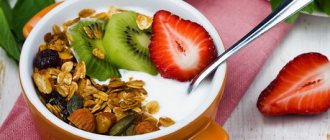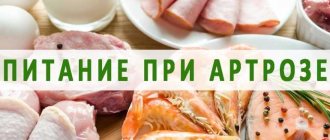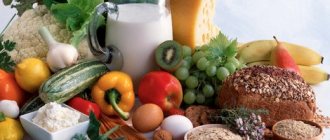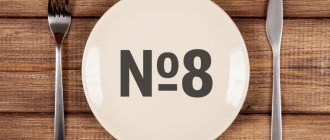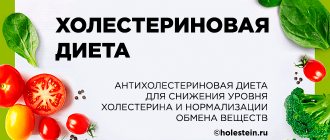Duodenitis is an inflammation of the mucous membrane of the duodenum, and gastritis is an inflammation of the gastric mucosa. Both diseases can be either chronic or acute, and for both diagnoses, a diet that is gentle on the mucous membranes must be prescribed. It is necessary to understand that nutrition in this case is an integral part of therapy, and in a certain sense, the key to its success, because if the patient does not follow the rules of nutrition, the positive effect of the medications may not only decrease, but even disappear.
The prescribed diet for duodenitis and gastritis helps heal erosions and reduces inflammation of the mucous membrane. This diet is prescribed in order to stabilize the digestive system and at the same time supply the body with all the necessary nutrients.
Why do you need a diet for duodenitis and gastritis?
Gastritis is an inflammatory lesion of the mucous membrane ─ of the inner wall of the stomach, which leads to disruption of its functionality. It may be accompanied by both increased and decreased secretion of gastric juice, and may be complicated by the formation of erosions or ulcers, which is more typical for gastritis with high acidity; the formation of benign or malignant neoplasms - with gastritis with low or zero acidity. Duodenitis is inflammation of the duodenal mucosa. As a rule, isolated duodenitis does not occur. The inflammatory process usually involves the mucous membrane of both the stomach and duodenum. This disease is called gastroduodenitis, combining gastritis and duodenitis into one disease, since the treatment in this case is the same and depends largely on the cause that caused the inflammatory process. In addition to drug therapy, the treatment complex must include dietary nutrition. Since it promotes faster restoration of mucous membranes. To do this, you should follow a strict nutrition menu for gastritis of the stomach and duodenitis, especially in their chronic form. In the latter case, such nutrition becomes a way of life.
When two pathological conditions are combined - gastritis and duodenitis, the diet is aimed at reducing inflammation of both the mucous membrane of the digestive organ and the duodenum. Properly organized nutrition makes it possible to:
- Minimize symptoms of diseases and pain;
- Improve the digestion process by restoring the normal functioning of the digestive tract;
- Provide the body with nutrients and vitamins to improve immunity.
Strict adherence to the recommendations of the attending physician regarding the choice of foods and diet in combination with drug therapy and traditional recipes will improve the condition in a short time. With a competent attitude to nutrition, you can completely forget about existing diseases for a long time.
The most effective methods of treatment with folk remedies at home
In folk medicine there are many different recipes with the help of which gastroduodenitis is promised to be cured completely and forever. Next, we will analyze the most effective methods of treatment with folk remedies at home:
How to treat with herbs?
Major diseases of the stomach and duodenum can be treated with herbs. These medicinal plants have anti-inflammatory, choleretic and bactericidal effects on the body. For the treatment of gastroduodenitis the following are used:
Pour boiling water over chamomile, St. John's wort and yarrow in equal parts, based on the fact that there is one glass of water per tablespoon of herbs. Leave for half an hour, then filter. Drink the decoction for two weeks, thirty minutes before meals.
Chamomile
Chamomile is considered one of the best natural healing remedies. It quickly eliminates stomach cramps and inflammation, promotes the healing of microtraumas of the mucous membrane and makes treatment much more effective.
Flax seeds

This plant helps with constipation and improves bowel function. Due to the content of polysaccharides, flax seeds have an enveloping property and, penetrating into the body, attract harmful substances and remove them out . This property is very valuable in the treatment of gastroduodenitis.
You should boil flax seeds in the proportion of 1 tablespoon of flaxseed to 2 cups of water. After which the decoction must be infused for 60 minutes with periodic shaking. Drink the infusion before each meal (2-3 sips).
Honey and propolis
Honey and propolis are beneficial due to their high content of microelements, which has a positive effect on the digestive tract.
Numerous studies show that bee honey and propolis:
- Improve digestion and regulate appetite.
- Stimulates natural wound healing processes.
- Relieves heartburn.
- They have an antimicrobial effect.
- Eliminate constipation and bloating.
- Restore intestinal flora, treat dysbiosis.
- Increases hemoglobin levels.
- Relieves nervous excitability, improves mood and restores healthy sleep.
For those who suffer from diseases of the stomach and duodenum, it is not recommended to consume more than 200 grams of honey per day.
Ginger
Many people believe that ginger helps with diseases of the duodenum and stomach, but this is a misconception.
Principles of nutrition
It is important not only to consume permitted foods according to the diet, but also to properly organize the nutrition process itself. This is of utmost importance and is due to a number of reasons. This is what is recommended for patients with gastritis and duodenitis:
- eat at least 4-5 times a day, since a full stomach does not contribute to the digestion process and often leads to increased symptoms - nausea, vomiting, flatulence, pain, bowel dysfunction, general weakness and malaise, poor digestibility of food;
- eat fresh foods and drink juices (especially orange), as this will help normalize digestion and activate digestion processes, if they do not have an irritating effect;
- do not eat before bed, so as not to increase the load on the digestive tract, provoking an exacerbation of chronic ailments;
- Eat everything only warm, because the temperature effect on the damaged stomach increases inflammation and pain.
Another very important addition: you need to eat slowly, chewing each piece thoroughly so as not to injure your stomach. Of course, all products will have to be cooked only in water, steamed or baked.
Attention! A nutritionist, a gastroenterologist, or a local doctor can select adequate dietary nutrition, as well as prescribe treatment. When prescribing food restrictions, he takes into account the characteristics of the disease, the general condition of the patient, his age, weight, etc.
Authorized Products
There is a list of foods that you can eat if you have gastritis and duodenitis. Here is what is recommended for nutrition:
- most types of porridges cooked in milk or water, but thoroughly crushed and boiled;
- most types of vegetables, cooked without frying and pureed or finely chopped;
- cutlets, meatballs and soufflé from meat, fish, low-fat poultry. During the period of exacerbation of the disease, the skin from the bird should be removed before preparing the dish;
- soups made with vegetable and meat broths with the addition of pasta, cereals and meatballs;
- fruits should be eaten, if possible, after heat treatment and preferably ripe, sweet;
- mousses, compotes, jelly, marmalade;
- no more than three eggs a day, but soft-boiled for unstable stools, and “hard” ─ for a tendency to constipation.
- low-fat fermented milk products - sour cream, kefir, yogurt, milk, fermented baked milk;
- butter and vegetable oil;
- It is allowed to eat dried white bread, biscuits, and white bread croutons.
To reduce painful symptoms, it is very useful to eat foods that have enveloping properties. Among them are slimy soups, porridges, and jelly-like dishes.
Simple recipes
We offer several recipes that will help with gastroduodenitis in the acute stage with increased stomach acidity:
- The vinaigrette. This recipe is simple but quite effective. Boil the potatoes, beets and carrots in a pan of water or in a double boiler. Chop, then season the salad with flaxseed or olive oil.
- Rice, semolina, buckwheat porridge. A simple recipe: prepare regular porridge with milk.
- Soup with vegetable broth. Roughly chop the carrots and potatoes. Then throw it into the pan and cook for half an hour over low heat. The broth should be infused for about 15 minutes and then strained. As a result, you will receive a base for soup made from wheat, pearl barley and other cereals.
Prohibited Products
You will have to completely give up or limit yourself in consuming products such as:
- fried pork, lamb;
- fresh bread, confectionery and baked goods;
- canned and smoked products;
- spicy seasonings, store-bought sauces and mayonnaise, vinegar, mustard;
- seeds, nuts, sweets;
- alcohol, soda, strong coffee and tea;
- cabbage, radish, turnips, cucumbers;
- chocolate and ice cream.
Violation of the diet threatens exacerbation of existing diseases. Even with a single use of a product from the prohibited list, all treatment efforts may be in vain, and you will have to start all over again.
Sample menu
The menu should contain dishes that provide the body with a complete complex of vitamins and minerals and do not injure the mucous membrane of the stomach and intestines. A sample menu might look like this:
- for the morning meal - a glass of milk, half a glass of muesli, cocoa with milk;
- at lunchtime - soup with meatballs, chicken cutlets with buckwheat porridge, zucchini puree, pumpkin juice;
- for a snack – banana, mashed with cottage cheese;
- for an evening meal - fish baked with mashed potatoes, a piece of “yesterday’s” biscuit or biscuits with tea;
- additional snack - fruit drink, sweet fruit jelly or a glass of kefir.
The diet can be adjusted taking into account the stage and form of the disease. Be sure to include vegetable and meat dishes in your daily diet. And with low acidity, also orange juice (not store-bought, but freshly squeezed) or one orange, but sweet.
Symptoms in adults
Gastroduodenitis in adults is characterized by the following symptoms:
- vomit;
- heartburn;
- belching;
- nausea;
- flatulence;
- loss of appetite;
- unpleasant taste in the mouth.
Another common sign of the disease is pain in the epigastric region - in the area directly under the xiphoid process, corresponding to the projection of the stomach on the anterior abdominal wall.
With superficial gastroduodenitis, the pain is mild. Treatment focuses on eliminating irritants and normalizing digestive processes. In the superficial form, the mucous membrane becomes inflamed only in the upper layers. Atrophic processes are not observed in this case. With the erosive form of gastritis and gastroduodenitis, the symptoms are more unpleasant and painful, so treatment must be started as early as possible. The erosive form is characterized by the covering of the stomach and intestines with numerous inflammatory foci with small ulcers - erosions. Vomiting may result in blood.
The video below provides more detailed information about the symptoms and treatment of gastroduodenitis:
How to eat during an exacerbation
Chronic diseases tend to worsen due to various reasons. Gastritis and duodenitis have similar causes, leading to exacerbation, and symptoms that manifest exacerbation. As a rule, the inflammatory process is localized in both the stomach and duodenum. Therefore, it is more correct to call this pathological process gastroduodenitis. Then it becomes clear what diet you should follow and for how long. In the first days, the goal is to dampen the inflammation as much as possible and improve your well-being. Therefore, during an exacerbation, it is recommended to drink warm alkaline mineral water without gas, and rosehip decoctions. You cannot eat solid food or drink coffee or tea.
General rules
Duodenitis is inflammation of the duodenum. According to the course, acute and chronic duodenitis are distinguished, and according to the endoscopic picture - hemorrhagic, erythematous, erosive, atrophic, nodular, hypertrophic. The causes of acute duodenitis are: consumption of spicy food and alcohol, food poisoning , damage to the mucous membrane by a foreign body.
Acute and primary chronic duodenitis occur when the duodenal mucosa is damaged by gastric contents that have high acidity. If the protective factors in the intestine are reduced, then the juices irritate the mucous membrane, causing inflammation.
Secondary duodenitis, which occurs against the background of other diseases ( pancreatitis , cholecystitis ), is a consequence of duodenostasis , when the contents of the stomach are retained in the duodenum for a long time and irritate the mucous membrane. It should be noted that the disease occurs in isolation very rarely. Due to the close connection of the stomach with the duodenum, they usually talk about gastroduodenitis . Both diseases have much in common: they are acid-dependent conditions that occur when there is an imbalance of aggressive and protective factors of the mucous membrane. Moreover, the resulting process in the stomach supports the process in the duodenum and vice versa.
In chronic gastroduodenitis, dysfunction of the nervous system, the presence of Helicobacter , psychogenic factors and nutrition play an important role. Stress, which provokes disturbances in gastrointestinal motility and gastric secretion, leads to organic disorders.
For a long time it was believed that chronic duodenitis is a pre-ulcerative condition, but this is a mistaken opinion. Gastroduodenitis and peptic ulcer disease are different diseases, and hereditary predisposition is of great importance in the development of peptic ulcer disease. Chronic duodenitis actually resembles a peptic ulcer clinically.
Patients are bothered by pain in the navel area, in the right hypochondrium, which intensifies on an empty stomach and at night. Characteristic symptoms include belching, nausea, vomiting, heartburn , constipation or diarrhea . In the treatment of the disease, proper nutrition is of no small importance.
Patients with chronic gastroduodenitis are prescribed nutrition as for peptic ulcer disease. The diet for duodenitis depends on the stage of the disease (exacerbation or attenuation of the process), as well as on the acidity of gastric juice. In case of increased acidity during the period of exacerbation, Tables No. 1A , No. 1B , during the recovery period - Table No. 1 . For secretory insufficiency - Table No. 2 , which includes juice substances.
Table No. 1A maximally limits all adverse effects of food on the mucous membrane, therefore it is prescribed for exacerbation of duodenitis or when erosive duodenitis with bleeding is diagnosed. Erosion is a shallow defect in the mucosa that does not extend to the muscle layer. The purpose of this diet is to restore the mucous membrane and simultaneously reduce the excitability of the stomach.
Dietary recommendations for duodenitis
The therapeutic diet for any form of duodenitis consists of eliminating foods that irritate the mucous epithelium. When a patient undergoes a full course of complex treatment or is in the recovery period from an illness, then it is necessary to adhere to simple recommendations from doctors.
The basic rules and tips for complete recovery are as follows:
- fractional meals;
- meals should be planned for the week;
- exclude alcoholic drinks, tobacco products and rough foods;
- products must first undergo heat treatment;
- During the day you should not consume more than 12 g of salt;
- rough products are crushed before consumption.
Meals for duodenitis should be in small portions up to 300 g per dish. You need to eat every 3 hours, but you shouldn’t overeat. Diet planning helps to maintain the body's production of gastric juice in good shape. During treatment, you should give up bad habits.
Food is subjected to heat treatment and served boiled, boiled or baked. During the day, you should not add more than 12 g of salt to the total complexity of dishes. It is recommended to season already prepared products.
When roughage is consumed, abrasive particles damage the mucous epithelium of the duodenum. Therefore, it is recommended to pre-grind or grind such products.
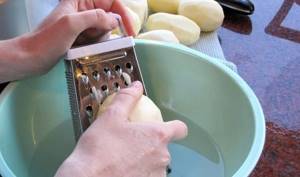
Doctors advise serving food warm up to 50°C. During dietary nutrition, the qualitative composition of dishes changes. Proper nutrition involves increasing the protein content in the diet per day. Because of this, reduce the consumption of fats and carbohydrates. By adhering to the doctor’s advice, the patient significantly increases the chance of recovery.
Why is dieting so important?
If the patient eats properly, this helps to eliminate the symptoms characteristic of acute duodenitis, namely pain, nausea, accompanied by vomiting. It is important to adhere to the diet during the period of remission, which will help to avoid or at least delay the occurrence of exacerbations in the patient.
A healthy diet normalizes the patient’s gastrointestinal tract and has a beneficial effect on his well-being. If you voluntarily abandon the diet, the patient may experience complications, namely periduodenitis, bleeding, ulcers and others.
This is a gentle diet, which, nevertheless, provides adequate nutrition for the patient, as it contains about 2170 -2480 Kcal. Per day, a patient with duodenitis should eat at least 90 g of proteins, most of which are animal (60-70%), as well as about 80 g of fat, some of which (up to 20%) are vegetable. The amount of carbohydrates in the patient is reduced to 300 g, maximum - 350 g. According to Pevzner’s classification, this diet is table No. 5.
Permitted and prohibited products
During the diet, doctors identify a number of foods that are acceptable for consumption and those that need to be removed from the diet. However, some dishes may be temporarily limited.
It is noted that due to the individual characteristics of the patient’s body, foods that stimulate the production of gastric juice are excluded:
- meat or fish broths;
- mushrooms;
- roast;
- stewed meat and fish;
- sauces and spices;
- fish products;
- canned products;
- pickled vegetables.
During an exacerbation of the disease, it is strictly forbidden to consume confectionery and bakery products, especially products made from puff pastry and butter dough. Depending on the body’s reaction, limit the consumption of white cabbage, radishes, cucumbers and onions. To the same list are added cereals, which are included in the diet if the patient does not experience any discomfort after taking it.

Fruits and vegetables are subject to slight restrictions. Basically, sour berries and fruits have a negative effect on the inflammatory process in the duodenum. Doctors do not officially place any restrictions on these products. Therefore, the patient needs to independently pay attention to the body’s reaction. If symptoms of duodenitis appear, the product is excluded from the diet.
What foods are included in the diet?
To treat duodenal duodenitis, especially the symptoms of the pathology, doctors identify a number of products that are approved for consumption. At the same time, your daily diet should include wheat bread, preferably dried. Soups made from vegetables are allowed.
Boiled cereals or an egg-milk mixture are added to liquid dishes. When symptoms are pronounced, it is recommended to consume pureed soups. Dietary meat is used to prepare steamed dishes or serve boiled. The fish is steamed. The product is prepared without skin and cut into pieces. In case of inflammation of the duodenum, it is allowed to consume fermented milk products and make dishes from them. For this purpose, semolina, buckwheat and rice cereals are used. However, porridge can be cooked in water and butter is added when serving. It depends on the individual characteristics of the organism.
Among vegetables with duodenitis, you can eat a small amount of fruits, which include potatoes, cauliflower, carrots and beets. These vegetables are prepared by boiling or steaming. The dishes are served in the form of puree or soufflé. Drinks on the menu include weak tea, juices, jelly and compotes. If necessary, sugar and honey can be added to dishes to taste.
What should you not eat?
Prohibited products for duodenitis include those that irritate the mucous membrane. Therefore, smoked, spicy or over-salted dishes are excluded from the diet. In addition, you should not consume products containing stabilizers, preservatives and flavor enhancers.
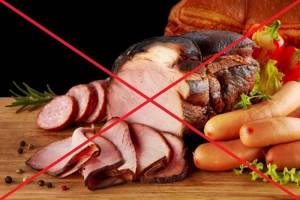
In case of inflammation of the mucous membrane, foods with a large amount of fiber and which create gases in the intestines are prohibited. This leads to complications of health due to duodenitis and impaired absorption of substances.
It is necessary to exclude products containing trans fats. They are poorly excreted from the body or remain forever in human tissues. With duodenitis, fats with a refractory structure additionally irritate the mucous membrane.
The following foods should not be eaten at all:
- soups based on mushroom, meat and fish broths;
- fatty foods and meat;
- pickles and marinades;
- cabbage and legumes;
- sausage and canned food;
- rich vegetable dishes (borscht or cabbage soup);
- fast food;
- fatty fermented milk products;
- alcohol;
- raw fruits;
- cocoa and coffee.
When harmful foods are removed from the diet during illness, the patient protects the tissues of the digestive tract. Heavy food has a harsh effect on the gastrointestinal tract. Therefore, the body is not able to cope with the digestion of such food.
Fully or partially limited products
- Secretion-stimulating foods and dishes: meat/fish broths, mushrooms and mushroom decoctions, fried dishes, stewed meat and fish, tomato, meat, mushroom and fish sauces, smoked meat and fish products, canned food, pickles and pickled vegetables, spices and seasonings ( horseradish, mustard, mayonnaise).
- Rye bread, any fresh bread, confectionery products made from puff pastry/butter dough.
- Fermented milk products with high acidity.
- White cabbage, radish, sorrel, cucumbers, tomatoes, onions.
- Millet, pearl barley, barley and corn cereals, pasta, legumes.
- Sour and coarse fiber fruits/berries.
This list is approximate, but you should always focus on your feelings. If discomfort, nausea, belching or vomiting occurs when consuming any product, then you need to exclude it from the diet.
Table of prohibited products
| Proteins, g | Fats, g | Carbohydrates, g | Calories, kcal | |
Vegetables and greens | ||||
| vegetables legumes | 9,1 | 1,6 | 27,0 | 168 |
| cabbage | 1,8 | 0,1 | 4,7 | 27 |
| cucumbers | 0,8 | 0,1 | 2,8 | 15 |
| radish | 1,2 | 0,1 | 3,4 | 19 |
| white radish | 1,4 | 0,0 | 4,1 | 21 |
| turnip | 1,5 | 0,1 | 6,2 | 30 |
| horseradish | 3,2 | 0,4 | 10,5 | 56 |
| garlic | 6,5 | 0,5 | 29,9 | 143 |
| sorrel | 1,5 | 0,3 | 2,9 | 19 |
Mushrooms | ||||
| mushrooms | 3,5 | 2,0 | 2,5 | 30 |
Cereals and porridges | ||||
| corn grits | 8,3 | 1,2 | 75,0 | 337 |
| pearl barley | 9,3 | 1,1 | 73,7 | 320 |
| wheat bran | 15,1 | 3,8 | 53,6 | 296 |
| millet cereal | 11,5 | 3,3 | 69,3 | 348 |
| barley grits | 10,4 | 1,3 | 66,3 | 324 |
Flour and pasta | ||||
| pasta | 10,4 | 1,1 | 69,7 | 337 |
Bakery products | ||||
| oatmeal bread | 10,1 | 5,4 | 49,0 | 289 |
| Rye bread | 6,6 | 1,2 | 34,2 | 165 |
| bran bread | 7,5 | 1,3 | 45,2 | 227 |
| doctor's bread | 8,2 | 2,6 | 46,3 | 242 |
| whole grain bread | 10,1 | 2,3 | 57,1 | 295 |
Confectionery | ||||
| jam | 0,3 | 0,2 | 63,0 | 263 |
| candies | 4,3 | 19,8 | 67,5 | 453 |
| pastry cream | 0,2 | 26,0 | 16,5 | 300 |
| butter cookies | 10,4 | 5,2 | 76,8 | 458 |
Ice cream | ||||
| ice cream | 3,7 | 6,9 | 22,1 | 189 |
Cakes | ||||
| cake | 4,4 | 23,4 | 45,2 | 407 |
Chocolate | ||||
| chocolate | 5,4 | 35,3 | 56,5 | 544 |
Raw materials and seasonings | ||||
| mustard | 5,7 | 6,4 | 22,0 | 162 |
| ketchup | 1,8 | 1,0 | 22,2 | 93 |
| mayonnaise | 2,4 | 67,0 | 3,9 | 627 |
| ground black pepper | 10,4 | 3,3 | 38,7 | 251 |
| chilli | 2,0 | 0,2 | 9,5 | 40 |
Meat products | ||||
| pork | 16,0 | 21,6 | 0,0 | 259 |
Sausages | ||||
| dry-cured sausage | 24,1 | 38,3 | 1,0 | 455 |
| sausages | 12,3 | 25,3 | 0,0 | 277 |
Bird | ||||
| smoked chicken | 27,5 | 8,2 | 0,0 | 184 |
| duck | 16,5 | 61,2 | 0,0 | 346 |
| smoked duck | 19,0 | 28,4 | 0,0 | 337 |
| goose | 16,1 | 33,3 | 0,0 | 364 |
Fish and seafood | ||||
| dried fish | 17,5 | 4,6 | 0,0 | 139 |
| smoked fish | 26,8 | 9,9 | 0,0 | 196 |
| canned fish | 17,5 | 2,0 | 0,0 | 88 |
Oils and fats | ||||
| creamy margarine | 0,5 | 82,0 | 0,0 | 745 |
| animal fat | 0,0 | 99,7 | 0,0 | 897 |
| cooking fat | 0,0 | 99,7 | 0,0 | 897 |
Non-alcoholic drinks | ||||
| black tea | 20,0 | 5,1 | 6,9 | 152 |
| * data is per 100 g of product | ||||
Weekly menu
Treatment of duodenitis consists of therapy to eliminate symptoms, therefore, to relieve symptoms in adults, the doctor prescribes a therapeutic diet. The menu for the week, on the first occasion, consists of breakfast.
- on Monday - egg white omelette, compote or fruit drink;
- on Tuesday - oatmeal with milk or water and juice;
- on Wednesday – vegetable salad and hard-boiled egg;
- on Thursday – boiled beets and tea with milk;
- on Friday - any milk porridge with permitted cereals and compote;
- on Saturday – barley porridge and carrot puree;
- on Sunday - vegetable salad and fruit drink.
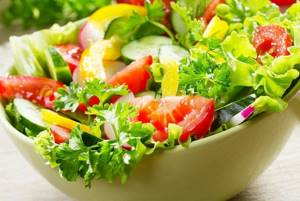
After breakfast until lunch, in case of exacerbation of duodenitis, take a snack. In this case, the products alternate depending on the day of the week. It is recommended to eat a banana and juice as a snack. The next day, low-fat cottage cheese, milk and baked apples. Depending on the daily amount of proteins, fats and carbohydrates, they eat chicken breast, vegetable puree and weak tea for a snack.
What else to read:
- What can you eat after gastric surgery Contents of the article:1 Therapeutic diet: stages2 Nutrition after surgery: general rules3 Eating pureed foods4 Eating non-mashed foods Due to the fact that after surgery on the stomach,……
- Menu for gastric ulcer Contents of the article:1 Nutritional features2 What needs to be removed from the menu?3 Diet number 14 Treatment with medications5 Nutrition and treatment for perforated ulcers6 Recipes for alternative medicine Gastric ulcer……
- About the dangers of coffee drunk on an empty stomach Contents of the article:1 Why it is harmful2 When is it better to drink coffee3 Which coffee is the most harmful4 The harm and benefits of coffee Many people start their morning with this aromatic and tasty drink without thinking......
Basic principles of diet for chronic gastroduodenitis
The average daily food intake for chronic gastroduodenitis should include:
- 10 g of plant and 60 g of animal proteins;
- 80 g fat;
- 230 g carbohydrates.
Based on the above information, the list of allowed foods for the diet for gastroduodenitis is as follows:
- fruits and fruit juice;
- pasta;
- cereals;
- dried fruits;
- milk;
- cream;
- starch;
- sugar;
- chicken meat;
- fish;
- eggs;
- salt;
- sour cream;
- tea.
- The average daily calorie intake for this diet is 1900 kilocalories.
The basic principles of the diet for gastroduodenitis are the following:
- minimize hard-to-digest foods (mushrooms, bananas, mussels);
- It is strongly recommended not to get carried away with delicacies, but to prefer dishes of national cuisine;
- eat 4 to 6 times a day, in small portions;
- It is desirable that there be equal breaks between each meal;
- food should preferably be at room temperature;
- Consume sweets exclusively in their natural form (honey, jam);
- Mineral and purified water without carbon is recommended for drinks.
When dieting for the treatment of gastroduodenitis, it is recommended to consume dishes in the following form:
- low-fat vegetable, meat and fish broths;
- puree soups;
- steam cutlets and meatballs;
- boiled eggs and in the form of omelettes;
- skim cheese;
- fresh juices;
- herbal decoctions;
- weak tea;
- vegetable and fruit puree;
- honey, jam, marmalade.
In the acute stage
As with chronic gastroduodenitis, in the acute stage, gastroduodenitis requires frequent split meals, at least 4 times a day. Before consuming any food product, it should be thoroughly crushed or brought to a liquid consistency. All dishes are appropriate in the diet only in boiled, stewed and baked form. Do not forget about folk remedies: herbal infusions, rosehip decoction.
For gastroduodenitis in the acute stage , the diet allows the following products on the menu:
- eggs;
- cereals;
- milk, cottage cheese;
- pasta;
- jelly, jam, honey;
- lean meats;
- vegetable oils;
- fruits vegetables.
As you know, with gastroduodenitis in the acute stage, severe pain occurs in the pancreas. Therefore, during this period it is strongly recommended to stop eating until the pain completely subsides, in order to avoid worsening the condition.
With high acidity
A diet for gastroduodenitis with high acidity requires compliance with the following mandatory rules:
- exclude foods containing fiber (radish, bran, muesli) from the diet;
- give up foods that increase the secretion of gastric juice (alcoholic and carbonated drinks, citrus fruits, brown bread, coffee, mushrooms, sauces);
- in the presence of gastroduodenitis, the temperature of food consumed should vary between 15 and 60 degrees;
- Do not allow food that is too hot or too cold in your diet.
General recommendations
General recommendations for gastroduodenitis boil down to the fact that you should eat only at strictly defined times. This recommendation will help improve gastrointestinal motility.
Eat small, frequent meals, at least six times a day. Avoid long gaps between meals.
It is necessary to eliminate foods that stimulate pepsin secretion from the diet.
Prohibited foods include:
- Sauces and spicy spices.
- Meat and fish broths.
- Fried and smoked dishes.
Menu for the week
We present to your attention a sample menu for a week of diet for gastroduodenitis:
Monday
- Breakfast: 200 g of rice porridge;
- Lunch: vegetable soup with herbs;
- Dinner: buckwheat porridge and low-fat fish cutlet.
Tuesday
- oatmeal with dried fruits, a glass of goat milk;
- 200 g baked chicken meat and kefir;
- cabbage soup and carrot juice.
Wednesday
- 150 g low-fat cottage cheese and a cup of herbal tea;
- buckwheat soup with low-fat meatballs;
- stewed vegetables - 250 g.
Thursday
- semolina porridge with honey or jam, unsweetened black tea;
- steamed chicken cutlets with herbs and low-fat sour cream;
- 200 g boiled rice, apple compote.
Friday
- fruit smoothie;
- mashed potatoes combined with low-fat chicken cutlet;
- stewed cabbage with potatoes and zucchini, a glass of low-fat kefir.
Saturday
- oatmeal, tea with lemon;
- buckwheat, 150 g of boiled rabbit meat and a glass of apple juice;
- baked perch with vegetables.
Sunday
- steamed omelette with tomatoes and herbs, fresh orange juice;
- stewed zucchini, apple and carrot puree;
- wash down the fruit salad with rosehip decoction.
As a snack in a diet for gastroduodenitis, foods such as baked apple, jelly, berry mousse, and 200 ml of low-fat kefir are acceptable.
Recipes
Diet recipes for gastroduodenitis are varied and very easy to prepare. Let's look at the most useful of them:
Light dessert for a diet with gastroduodenitis: Curd cream for the treatment of gastroduodenitis
Curd cream
Ingredients: chicken egg, a tablespoon of sugar and butter, two tablespoons of low-fat sour cream, vanillin.
- beat the egg with sugar;
- then heat over low heat, stirring constantly;
- after 5 minutes, remove from heat and mix with butter;
- then mix with vanilla and sour cream;
- add the egg-sugar mixture to the resulting cottage cheese and beat.
A recipe for an unusual soup on the diet menu for gastroduodenitis:
Semolina milk soup for the treatment of gastroduodenitis
Semolina milk soup
Ingredients: a tablespoon of semolina, 150 ml of milk, a teaspoon of butter and sugar.
- bring milk to a boil;
- carefully sift the cereal;
- then pour the cereal into the milk;
- cook for 25 minutes, stirring constantly;
- then add sugar and butter.
Perhaps the simplest diet recipe for the treatment of gastroduodenitis: Lazy dumplings for the treatment of gastroduodenitis
Lazy dumplings
Ingredients: 400 g low-fat cottage cheese, a tablespoon of flour, a teaspoon of sugar, a tablespoon of sour cream, a chicken egg.
- rub the cottage cheese through a sieve;
- then add all the remaining ingredients to it and mix thoroughly;
- form a small sausage from the resulting mass;
- then cut it into pieces and throw it into boiling water;
- cook for 5-10 minutes;
- eat with sour cream.
The following is a recipe that is recommended to be used 2-3 times while following the above diet to cure gastroduodenitis:
Berry mousse for the treatment of gastroduodenitis
Berry mousse
Ingredients: 200 g of your favorite berries, a tablespoon of semolina, 50 ml of water and a tablespoon of sugar.
- squeeze the berries, strain and boil;
- then add semolina with sugar and put on low heat;
- when the cereal is completely ready, remove the mass from the heat and beat in a mixer;
- then add berry juice.
Recipe that can be used daily in a diet for the treatment of gastroduodenitis:
Steam omelet for the treatment of gastroduodenitis
Steam omelette
Ingredients: a glass of water, 5 chicken eggs, a teaspoon of olive oil and a pinch of salt.
- grease the omelette vessel with olive oil;
- add water and put on low heat;
- beat the eggs with a whisk, adding a pinch of salt;
- pour the resulting mixture into a bowl;
- cover with a lid and cook for half an hour.
Duration and maintenance of results
The duration of the diet for gastroduodenitis depends on the severity of your disease. Since the menu was compiled for a week, if it is followed impeccably, you have every chance of recovering within the above-mentioned time frame. If necessary, this kind of nutrition can be extended up to a month.
Regarding nutrition when leaving the diet for gastroduodenitis , during this period it is recommended to consume:
- vegetable broths;
- puree soups;
- herring;
- dried bread;
- dairy products;
- chicken eggs;
- sweet fruits and berries;
- fruit juices, rosehip infusion, green tea.
When getting rid of gastroduodenitis, gradually add the following foods to your diet:
- kefir, yoghurt, yogurt, fermented baked milk;
- tomatoes;
- vegetable oil;
- watermelons;
- low-fat meat soups;
- baked apples;
- casseroles;
- low-fat meat and fish cutlets;
- honey, jam, marmalade, jam.
At the end of the diet for the treatment of gastroduodenitis, it is very important to continue to observe food restrictions, combining them with moderate physical activity, thereby gradually switching to a healthy lifestyle, which is likely to reduce the risk of developing this disease.
Therapeutic nutrition in the acute stage with increased stomach acidity
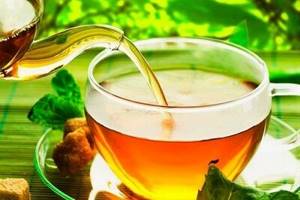
For gastroduodenitis in the acute stage with increased stomach acidity, one of the methods of control is fasting. You can follow this method for 2 or 3 days.
The diet after fasting should support mucosal protection. We recommend oatmeal, mashed potatoes and foods such as bananas, melons, apricots and vegetable juices.
Avoid foods that irritate your stomach. These include:
- cabbage;
- legumes;
- fried and fatty foods;
- spicy spices;
- coffee;
- Black tea;
- alcohol;
- carbonated drinks.
Fatty meats, sandwiches, sausage, high-fat cheese and foods prepared with margarine and butter have a negative impact on stomach health.
Oatmeal is recommended. Oat grains contain enzymes that support the protective effect of the stomach. Oatmeal should be eaten for breakfast.
Thus, a healthy diet is based on low fat content. Fruits, vegetables, potatoes, legumes and whole grains define the diet. Animal products are fading into the background.

